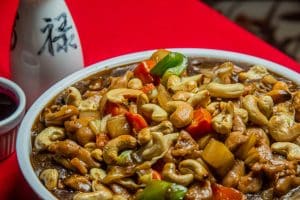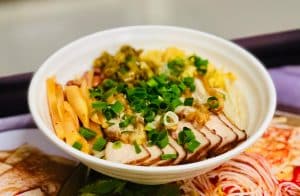Food photography involves capturing appealing images of meals and culinary creations. When photographing food during preparation or presentation, following specific techniques will significantly improve your results. Many images in cookbooks and food blogs lack visual appeal because the photographer hasn’t mastered proper food photography techniques. These tips will elevate your food photography to a professional level.
1. Add Context to Your Images
Rather than photographing just a plain meal on a plate, include elements that provide context and tell a story. When shooting in restaurants, capture the food alongside the restaurant’s ambiance, table settings, or accompanying beverages. This approach creates more engaging images than isolated food shots.
During food preparation, photograph the dish surrounded by its ingredients. This technique adds visual interest and gives viewers insight into the cooking process. Including contextual elements transforms simple food photos into compelling visual narratives that engage viewers and provide meaningful depth.
2. Avoid Using Camera Flash
Lighting is fundamental to photography, and this principle is especially critical for food photography. Never use your camera’s built-in flash when photographing food, as it creates harsh, unappetising shadows and reflections.
In restaurants, request seating near windows to take advantage of natural light. Window light creates beautiful, soft shadows that add dimension to your food images.
At home, position yourself near windows that don’t receive direct sunlight for the most flattering natural lighting. Experiment with different shooting positions to find the angle that best utilizes available light. Take multiple shots from various positions to ensure you capture the most appealing lighting scenario.

3. Use Contrasting Colours and Tones
Research colour theory to understand how contrasting colours enhance food photography. Strategic use of opposing colours creates visual impact and makes food appear more appetising.
For example, place green vegetables on red plates or add bright red tomato sauce to create striking colour contrasts. Consider both colour relationships and shape complementarity when styling your shots. Position square bowls alongside round plates and incorporate colourful side dishes or garnishes that complement your main subject.
Even simple additions like fresh mint leaves can dramatically improve a home food photograph. Always consider adding colourful herbs or garnishes that enhance both the visual appeal and colour balance of your composition.

4. Experiment with Different Angles
The overhead “flat lay” style has become increasingly popular in food photography. Try standing directly above your subject and shooting straight down to capture the entire plate along with the surrounding table setting.
At home, experiment with various angles to achieve natural, dynamic compositions. Side angles can showcase the height and layers of dishes, while 45-degree angles often provide the most appealing perspective for most foods. Don’t limit yourself to one viewpoint—try multiple angles to discover which best showcases your particular dish.
5. Don’t Crowd your Subject
Resist the temptation to overcrowd your food photography with unnecessary props or decorative elements. Keep focus on your main subject by maintaining clean, uncluttered compositions around the food.
Always prioritise your primary subject and leave adequate negative space around the dish. This minimalist approach ensures viewers focus on the food itself rather than being distracted by competing visual elements.
Following these five fundamental tips will help your food photography look as appetising as the dishes taste, creating images that truly capture the essence and appeal of your culinary subjects.
Following these five fundamental tips will help your food photography look as appetising as the dishes taste, creating images that truly capture the essence and appeal of your culinary subjects.

